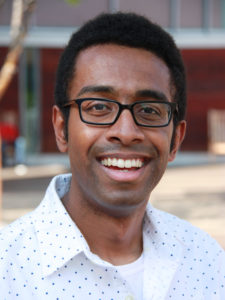December 3, 2019
The Honorable Larry Hogan
State of Maryland
Governor
100 State Circle
Annapolis, MD 21401
Re: Capital Beltway and I-270
Dear Governor Hogan:
We are writing to share our strong and continuing concerns with your proposals for the Capital Beltway and I-270. We urge you to delay further action at the Board of Public Works and any steps toward a public-private partnership, until you conduct a comprehensive alternatives and impact analysis under the National Environmental Policy Act (NEPA).
As we have noted before, MDOT failed to study an integrated transit-oriented development (TOD), transit and demand management alternative to your proposed toll lanes. This is important because your proposal will increase, not decrease driving demand, whereas a transit- oriented development approach that includes buildout of development at Prince George’s 15 Metro stations, Montgomery’s 13 stations, and selected MARC stations will reduce vehicle trips and vehicle miles traveled while providing the competitive placemaking environment so much in demand by people and corporations today. Transit components of this alternative include the Purple Line, Metro capacity expansion, MARC expansion, and bus rapid transit (BRT) networks. The Council of Governments recently determined that TOD, BRT, and Metro all performed best in improving the performance of our highways.
If the Amazon decision to locate in Arlington near two Metro stations tells us anything, it’s that transit-oriented development (TOD) is our future. In fact, the WMATA Connect Greater Washington study shows that build-out of the DC region’s Metro stations would so shift travel modes and trip patterns that we would avoid having to add 1000 lane miles of new roads and thousands of parking spaces. At the same time, Metro would go from needing public operating subsidies to annual operating surpluses because the trains would be full in both directions and all day due to the amount of development at the suburban stations.
Your proposed toll lanes will fail because of induced demand: the new capacity created by the toll lanes, especially through diversion from the general-purpose lanes, will not last. The general-purpose lanes will fill up again as people decide to live farther away from work to take advantage of the initial time savings or decide to switch to driving from other modes or to drive more often. At the same time, vehicles seeking to reach the new capacity will add to traffic on all connecting roads. Additionally, toll lanes have termini, and the congestion which occurs at these termini, where multiple new lanes merge into the regular lanes, is regularly substantial; the congestion is merely moved “down the line” by some miles. By fueling more long-distance living and commuting, toll lanes add to vehicle miles traveled, greenhouse gas emissions, air pollution, water pollution, and traffic. Last, but not least, they raise serious equity concerns.
As the Virginia experience has shown, the 12-lane highways that result from adding four toll lanes to the Beltway and other highways are a massive, generational alteration of our landscape and come at high cost to homes and neighborhoods, people and health, and the environment. You have committed to reducing greenhouse gas emissions in Maryland, yet the toll lanes will increase driving and emissions. In contrast, the comprehensive TOD, transit and demand management alternative will reduce vehicle trips, vehicle miles traveled and greenhouse gas emissions.
We have been extremely concerned about the process that has been applied to the toll highway proposals, as have the Comptroller and Treasurer, members of the legislature, the local community and local elected officials, and the Maryland National Capital Park and Planning Commission. The failure to complete the NEPA process including full alternatives and impacts analysis, creates significant risks for the project, both legal and financial.
The Comptroller promised the project would not be approved by the Board until the EIS is complete. Your proposed timeline assumes an agreement will happen in February of 2021 even though the NEPA process from the upper portion of I-270 has still not begun. Moreover, the Department of Legislative Services recommended that the P3 statute be amended to prohibit the submission of a pre-solicitation report prior to the availability of an environmental impact statement which has not yet been released.
The Maryland National Capital Park and Planning Commission (M-NCPPC) has twice decided unanimously not to concur with the alternatives for the project. To this date–the public and M- NCPCC still don’t have origin-and-destination data, stormwater management impacts, financial assumptions, toll rates and other critical information that is important for this solicitation proposal to be approved.
For all of the reasons we outline in this letter, we once again urge you to delay further action at the Board of Public Works and any steps toward a public-private partnership, until you conduct a comprehensive alternatives and impact analysis under the National Environmental Policy Act (NEPA), and to ultimately adopt the more effective and sustainable transit-oriented approach that we have outlined here.
Sincerely,
Denisse Guitarra | Maryland Conservation Advocate | Audubon Naturalist Society
Brian O’Malley | President & CEO | Central Maryland Transportation Alliance
Stewart Schwartz | Executive Director | Coalition for Smarter Growth
Ed Rich | President | Greater Farmland Civic Association
Lois Hybl and Richard Willson | Co-Presidents | League of Women Voters of Maryland
Pamela Goddard | Senior Program Director, Mid-Atlantic Region | National Parks Conservation Association
Josh Tulkin | Director | Sierra Club, Maryland Chapter
Kimberly Golden Brandt | Director | Smart Growth Maryland



